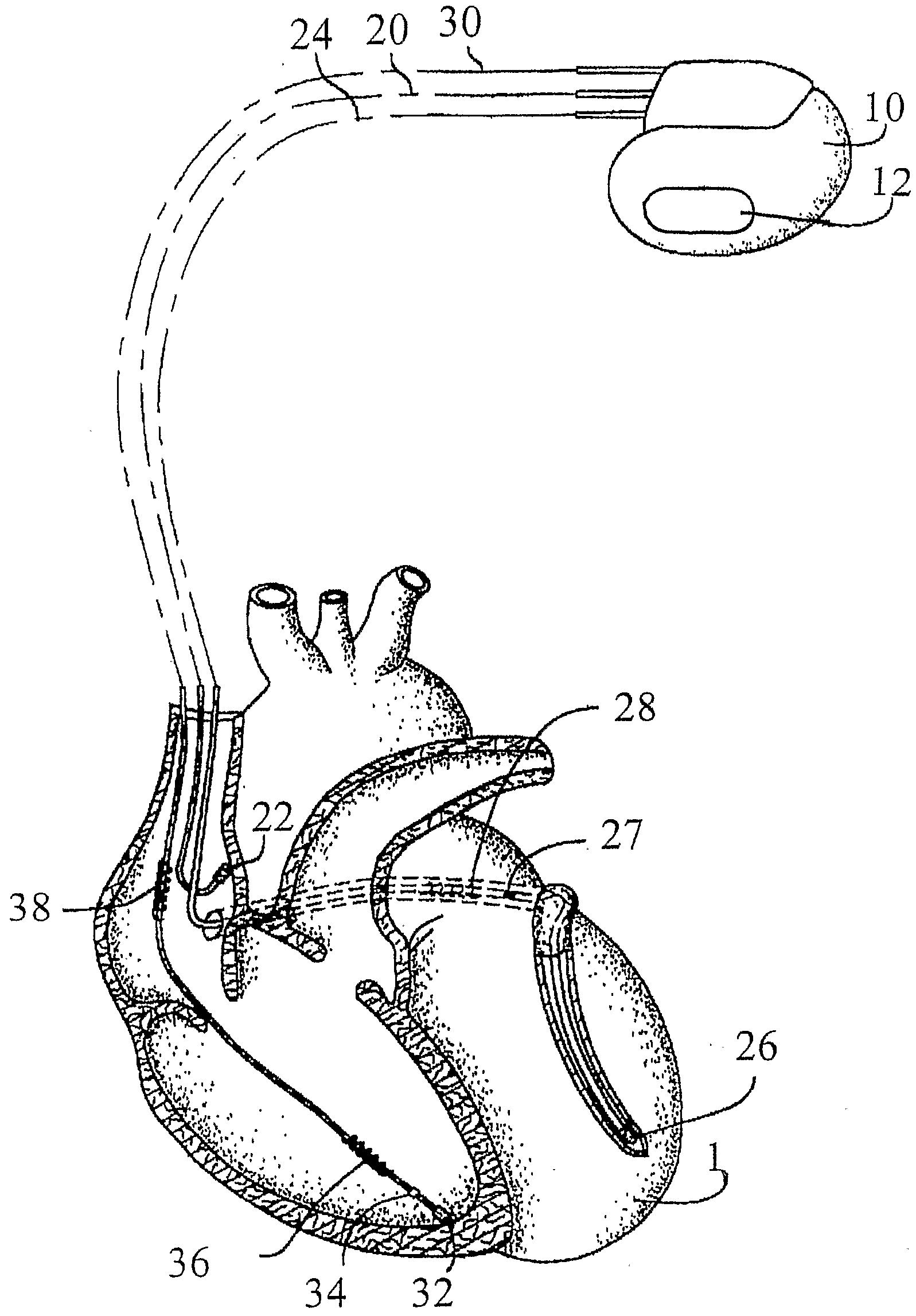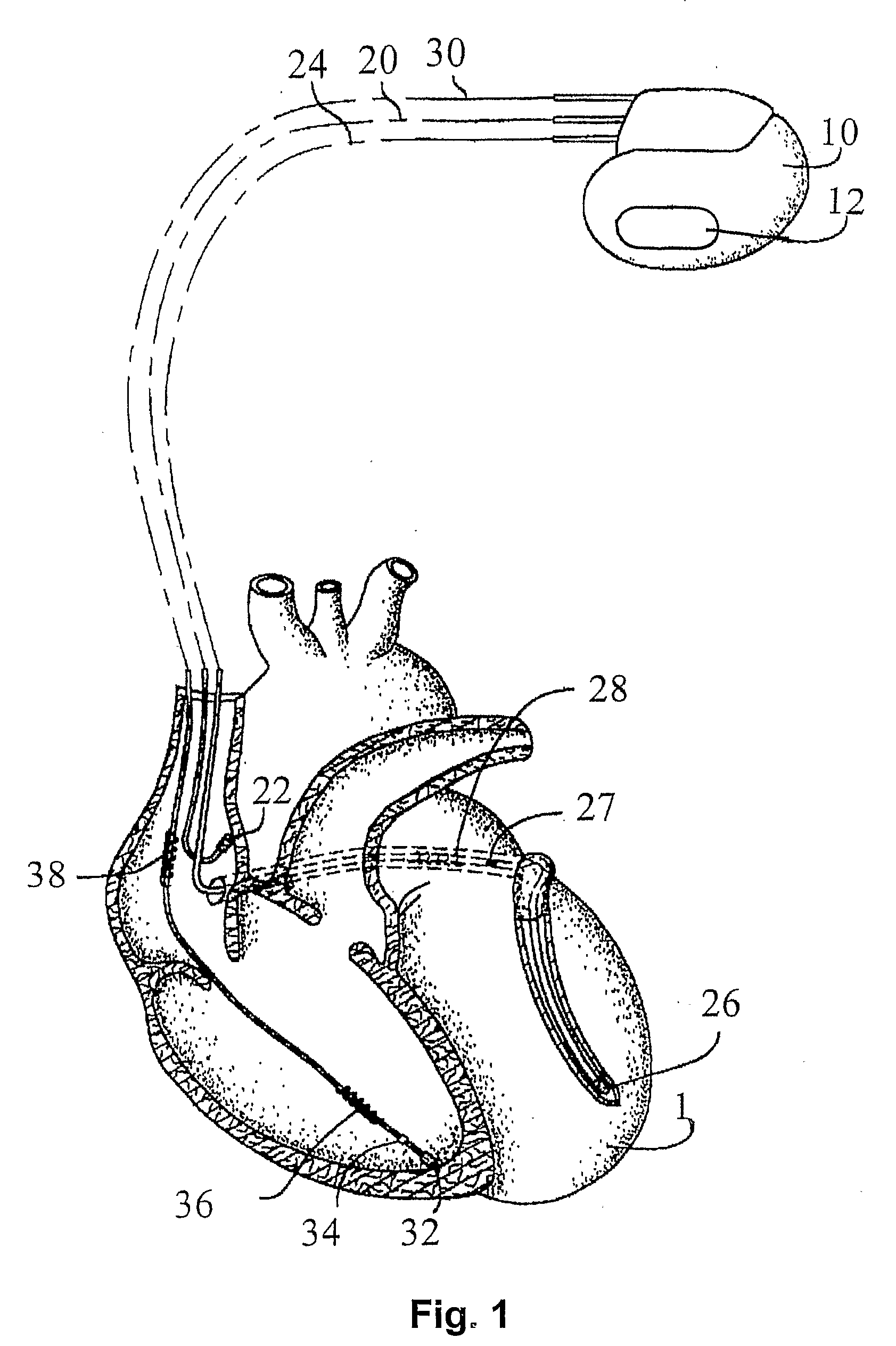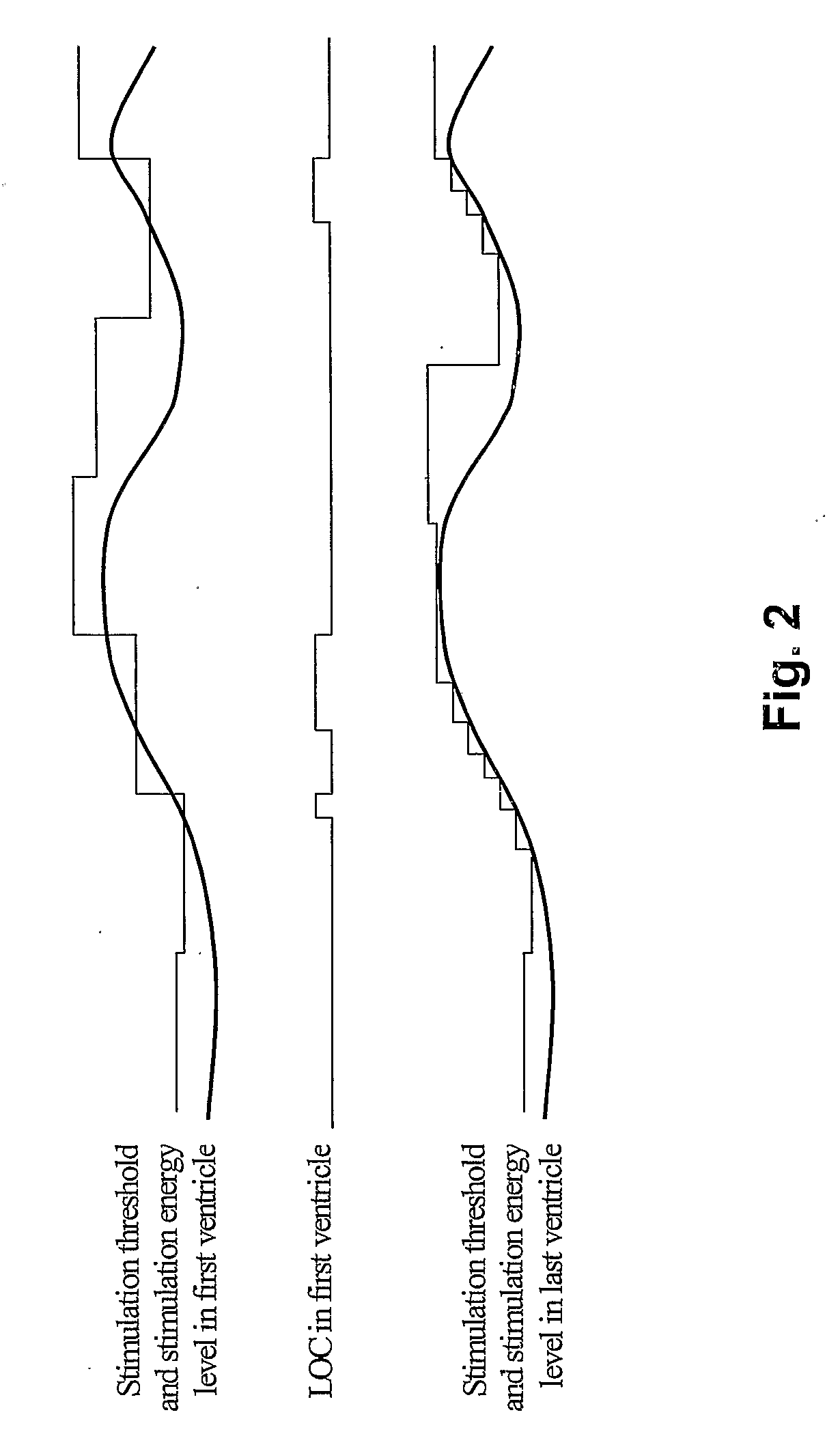Biventricular Heart Stimulator and Method of Controlling a Biventricular Heart Stimulator
a heart stimulator and biventricular technology, applied in heart stimulators, electrophysiology, therapy, etc., can solve the problems of loss of capture and loss of capture, and achieve the effect of increasing the safety margin and reducing the time between threshold searches
- Summary
- Abstract
- Description
- Claims
- Application Information
AI Technical Summary
Benefits of technology
Problems solved by technology
Method used
Image
Examples
Embodiment Construction
[0042]The following is a description of preferred embodiments in accordance with the present invention. This description is not to be taken in a limiting sense, but is made merely for the purpose of describing the general principles of the invention. Thus, even though a biventricular heart stimulator for sensing and stimulating in both the atria and ventricles will be described, the invention is also applicable to biventricular stimulators without atrial sensing and / or stimulation.
[0043]With reference first to FIG. 1, there is shown a biventricular heart stimulator 10 in electrical communication with a human heart 1 via three cardiac leads 20, 24, and 30 suitable for delivering mufti-chamber stimulation and sensing. The stimulator could further be arranged to deliver cardioversion or shock therapy to the heart.
[0044]In order to sense atrial cardiac signals and to provide right atrial chamber stimulation therapy, the heart stimulator 10 is coupled to an implantable right atrial lead ...
PUM
 Login to View More
Login to View More Abstract
Description
Claims
Application Information
 Login to View More
Login to View More - R&D
- Intellectual Property
- Life Sciences
- Materials
- Tech Scout
- Unparalleled Data Quality
- Higher Quality Content
- 60% Fewer Hallucinations
Browse by: Latest US Patents, China's latest patents, Technical Efficacy Thesaurus, Application Domain, Technology Topic, Popular Technical Reports.
© 2025 PatSnap. All rights reserved.Legal|Privacy policy|Modern Slavery Act Transparency Statement|Sitemap|About US| Contact US: help@patsnap.com



